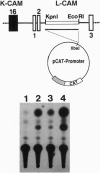Abstract
L-CAM is a calcium-dependent cell adhesion molecule that is expressed in a characteristic place-dependent pattern during development. Previous studies of ectopic expression of the chicken L-CAM gene under the control of heterologous promoters in transgenic mice suggested that cis-acting sequences controlling the spatiotemporal expression patterns of L-CAM were present within the gene itself. We have now examined the L-CAM gene for sequences that control its expression and have found an enhancer within the second intron of the gene. A 2.5-kb Kpn I-EcoRI fragment from the intron acted as an enhancer of a simian virus 40 minimal promoter driving a chloramphenicol acetyltransferase (CAT) reporter gene and produced 14.0-fold induction of CAT activity in MDCK cells. To narrow down the region responsible for enhancer activity and to determine whether the enhancer could function in a cell type-specific manner, a number of smaller restriction fragments from the intron were tested for activity in two chicken cell lines, the LMH hepatoma line, which produces high levels of L-CAM, and the SL-29 fibroblast line, which produces little, if any, L-CAM. Four L-CAM enhancer plasmids containing shorter segments derived from the intron showed enhanced CAT activity levels (between 9.4- and 16.5-fold) in extracts from transfected LMH cells but not from SL-29 cells. DNA sequence analysis of the L-CAM enhancer region revealed putative binding sites for the transcription factors SP1, E2A, and AP-2. In addition, LE-9, the smallest L-CAM enhancer segment (310 bp), contained a consensus binding site for the liver-enriched POU-homeodomain transcription factor, HNF-1. Tests of upstream sequences showed that a 630-bp fragment, corresponding to nearly the entire intergenic region between L-CAM and its neighboring CAM gene, K-CAM, could function as a promoter. In combination with the L-CAM enhancer, this fragment directed cell type-specific expression of the CAT reporter gene in LMH cells at a level comparable to that observed with enhancer constructs using the simian virus 40 minimal promoter. These combined observations define a promoter and an enhancer for the chicken L-CAM gene. They raise the possibility that these cis-acting regulatory sequences may be instrumental in directing specific place-dependent expression of the L-CAM gene in the chicken.
Full text
PDF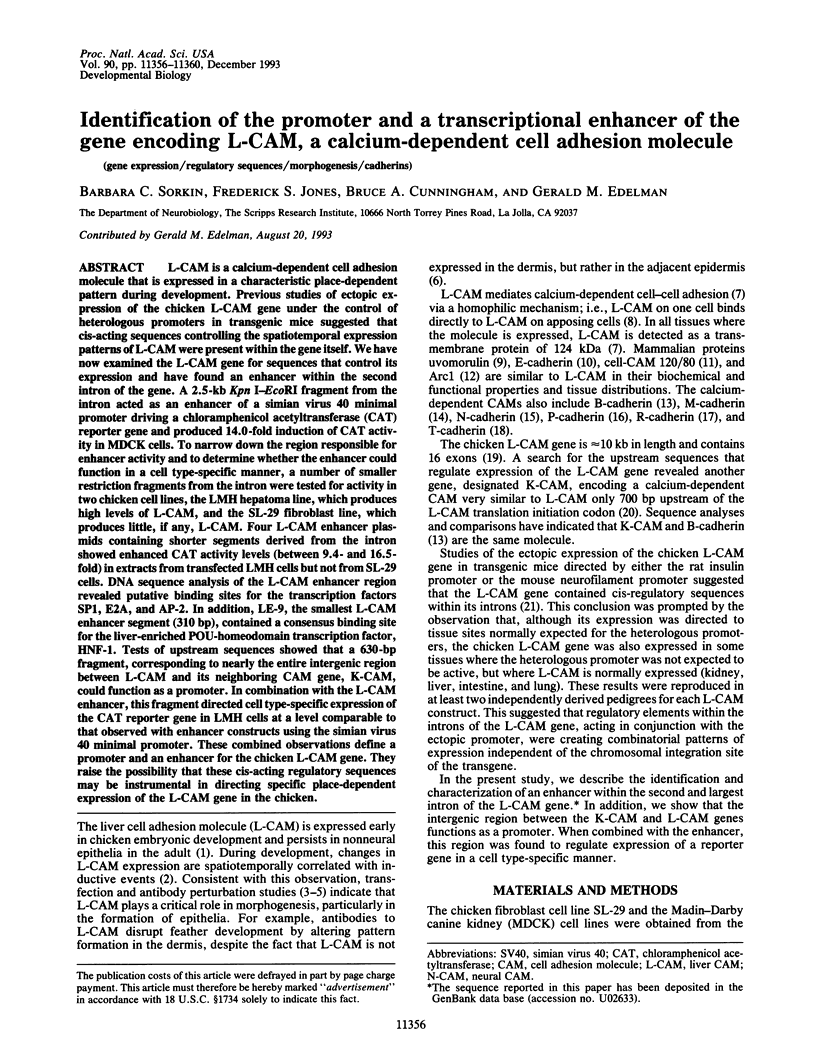
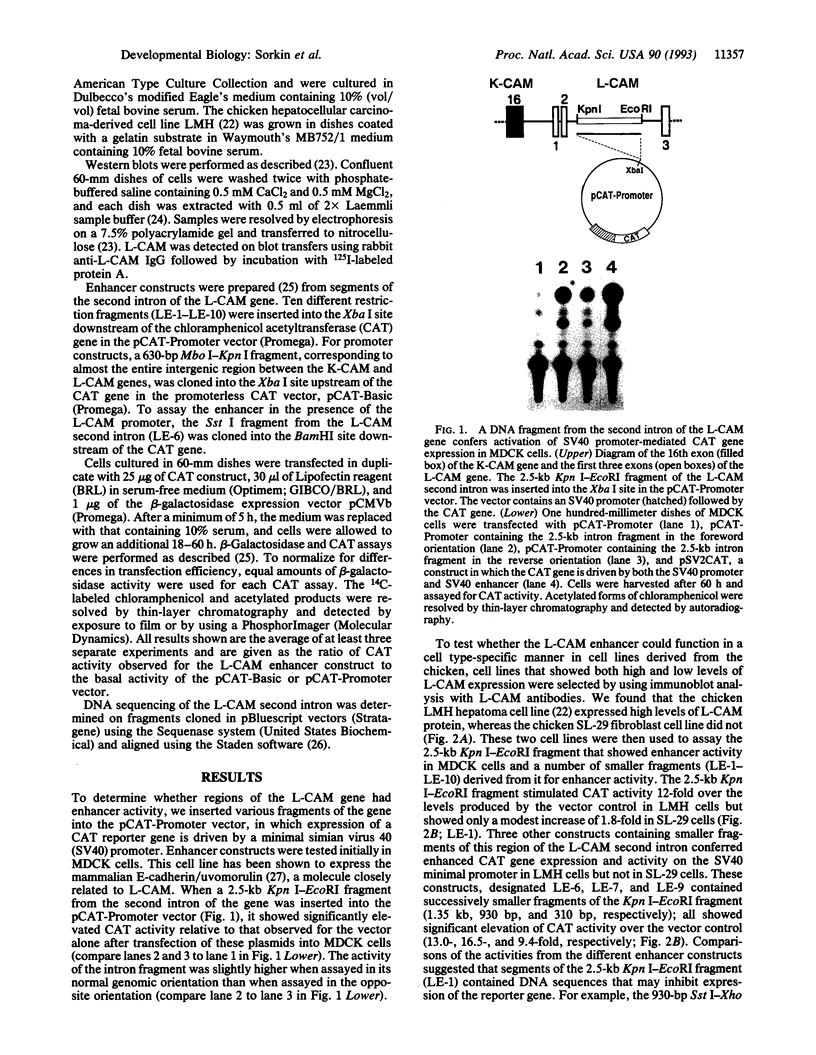
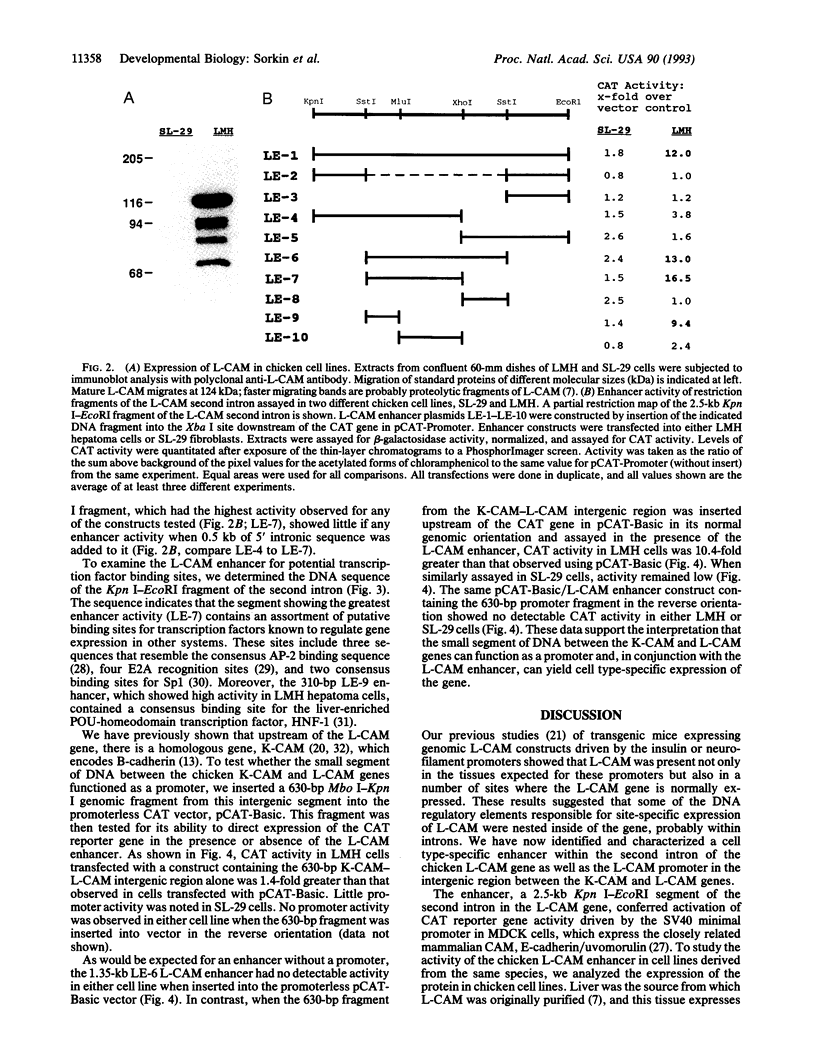
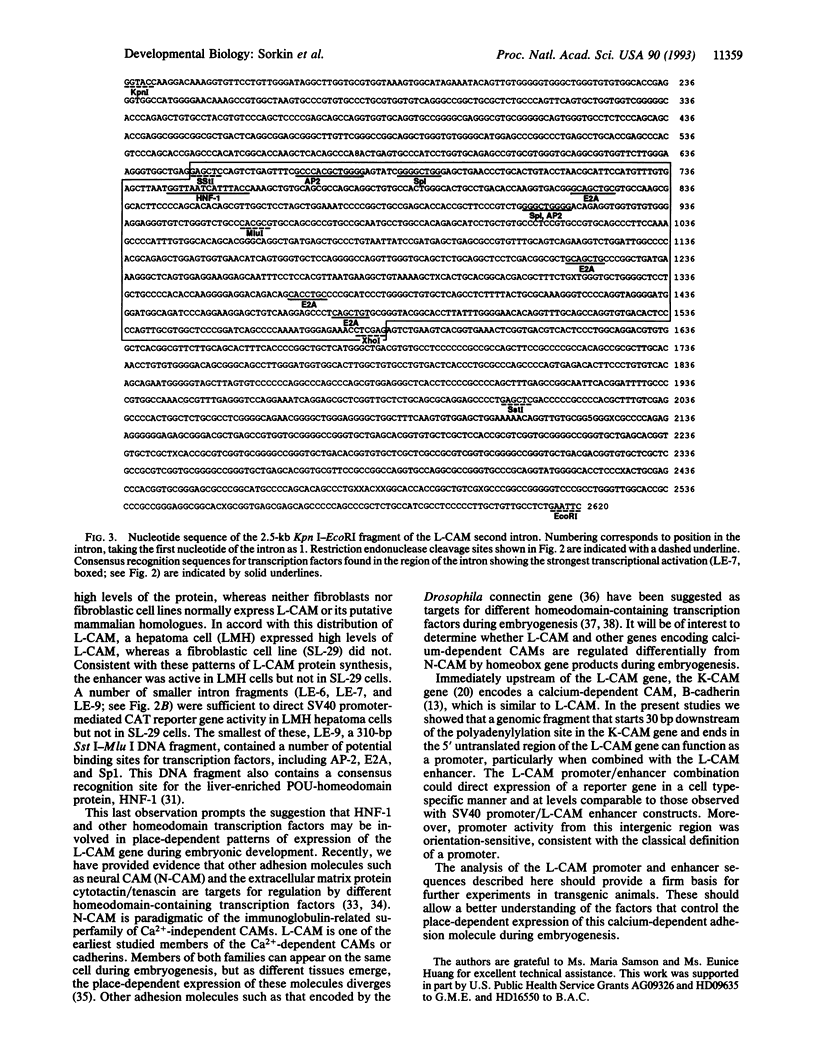
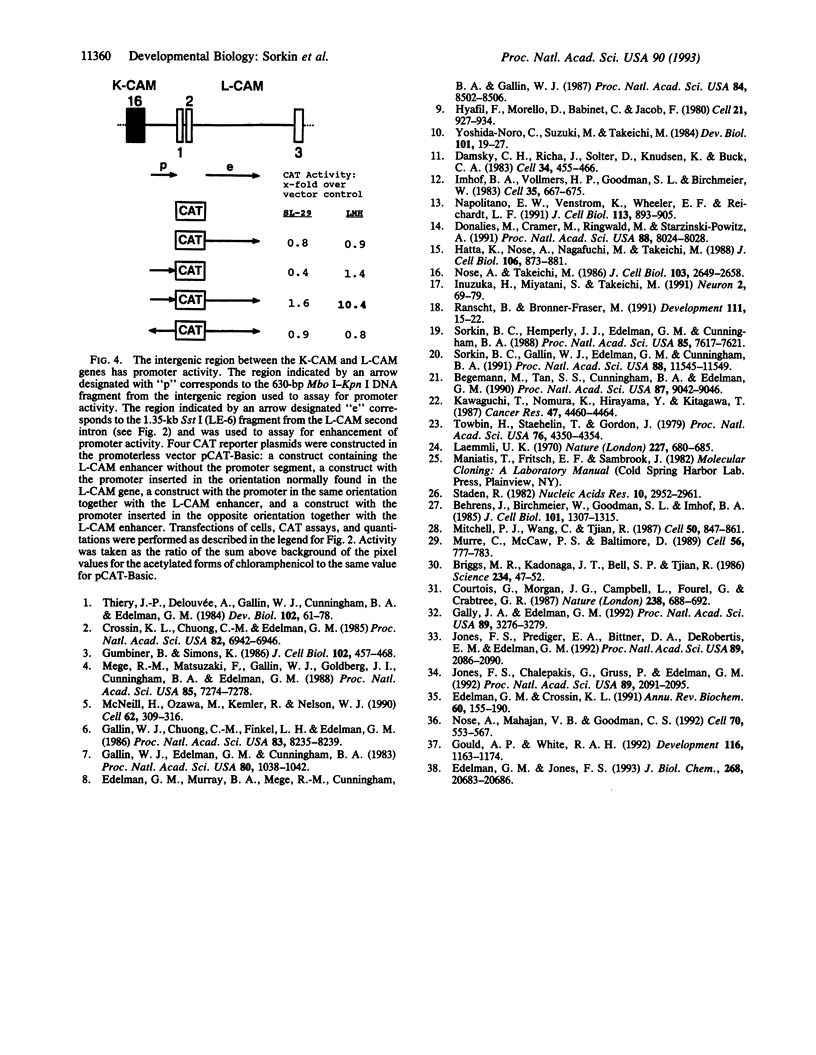
Images in this article
Selected References
These references are in PubMed. This may not be the complete list of references from this article.
- Crossin K. L., Chuong C. M., Edelman G. M. Expression sequences of cell adhesion molecules. Proc Natl Acad Sci U S A. 1985 Oct;82(20):6942–6946. doi: 10.1073/pnas.82.20.6942. [DOI] [PMC free article] [PubMed] [Google Scholar]
- Gallin W. J., Chuong C. M., Finkel L. H., Edelman G. M. Antibodies to liver cell adhesion molecule perturb inductive interactions and alter feather pattern and structure. Proc Natl Acad Sci U S A. 1986 Nov;83(21):8235–8239. doi: 10.1073/pnas.83.21.8235. [DOI] [PMC free article] [PubMed] [Google Scholar]
- Gallin W. J., Edelman G. M., Cunningham B. A. Characterization of L-CAM, a major cell adhesion molecule from embryonic liver cells. Proc Natl Acad Sci U S A. 1983 Feb;80(4):1038–1042. doi: 10.1073/pnas.80.4.1038. [DOI] [PMC free article] [PubMed] [Google Scholar]
- Gumbiner B., Simons K. A functional assay for proteins involved in establishing an epithelial occluding barrier: identification of a uvomorulin-like polypeptide. J Cell Biol. 1986 Feb;102(2):457–468. doi: 10.1083/jcb.102.2.457. [DOI] [PMC free article] [PubMed] [Google Scholar]
- McNeill H., Ozawa M., Kemler R., Nelson W. J. Novel function of the cell adhesion molecule uvomorulin as an inducer of cell surface polarity. Cell. 1990 Jul 27;62(2):309–316. doi: 10.1016/0092-8674(90)90368-o. [DOI] [PubMed] [Google Scholar]
- Mege R. M., Matsuzaki F., Gallin W. J., Goldberg J. I., Cunningham B. A., Edelman G. M. Construction of epithelioid sheets by transfection of mouse sarcoma cells with cDNAs for chicken cell adhesion molecules. Proc Natl Acad Sci U S A. 1988 Oct;85(19):7274–7278. doi: 10.1073/pnas.85.19.7274. [DOI] [PMC free article] [PubMed] [Google Scholar]
- Thiery J. P., Delouvée A., Gallin W. J., Cunningham B. A., Edelman G. M. Ontogenetic expression of cell adhesion molecules: L-CAM is found in epithelia derived from the three primary germ layers. Dev Biol. 1984 Mar;102(1):61–78. doi: 10.1016/0012-1606(84)90175-1. [DOI] [PubMed] [Google Scholar]



